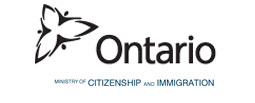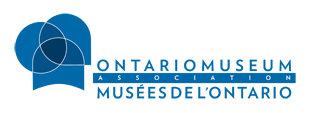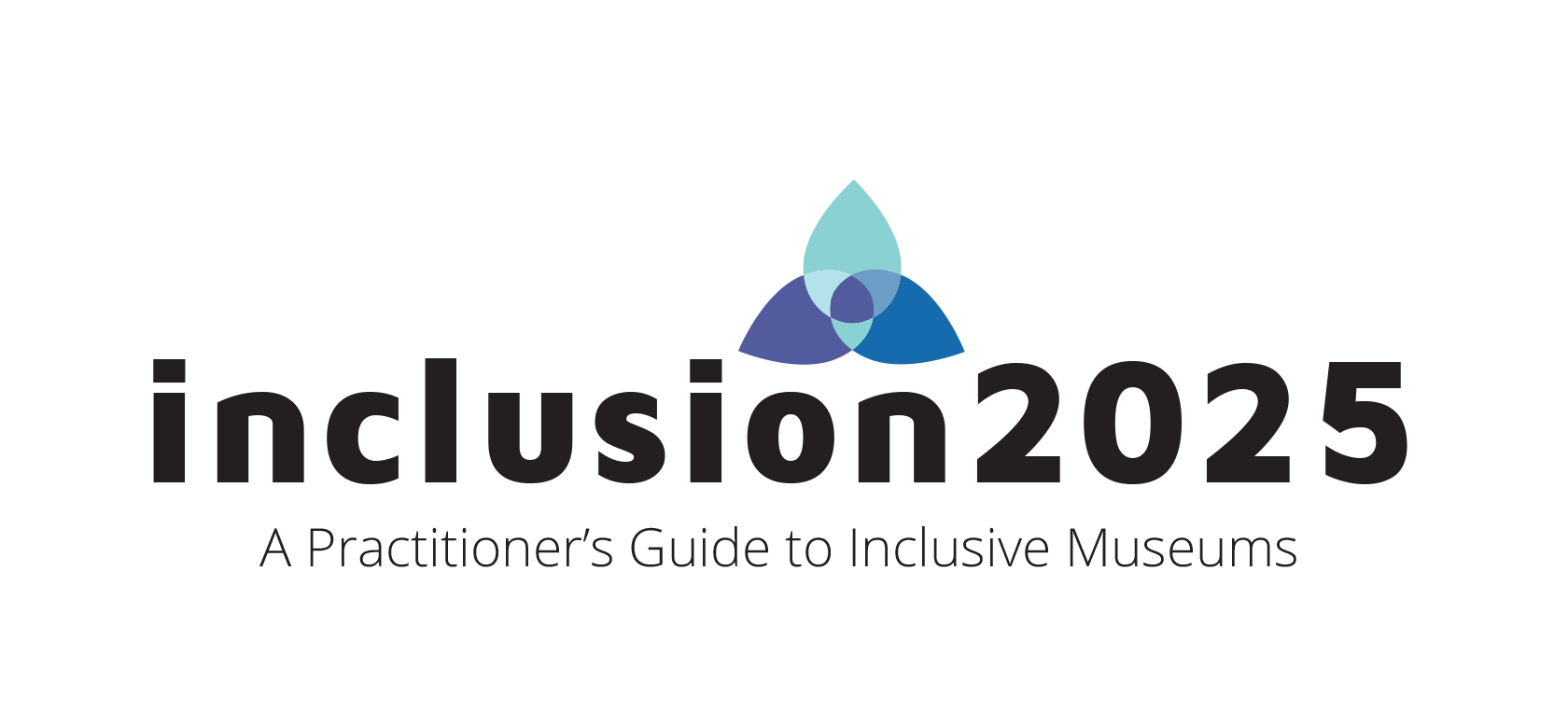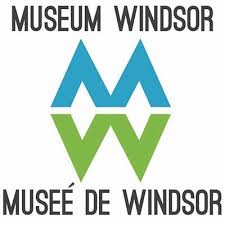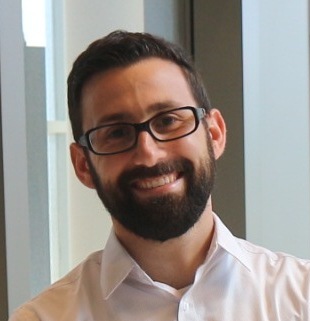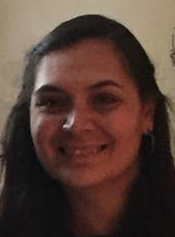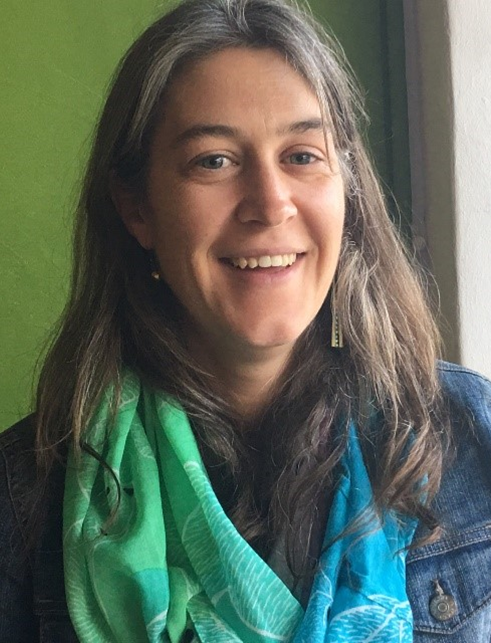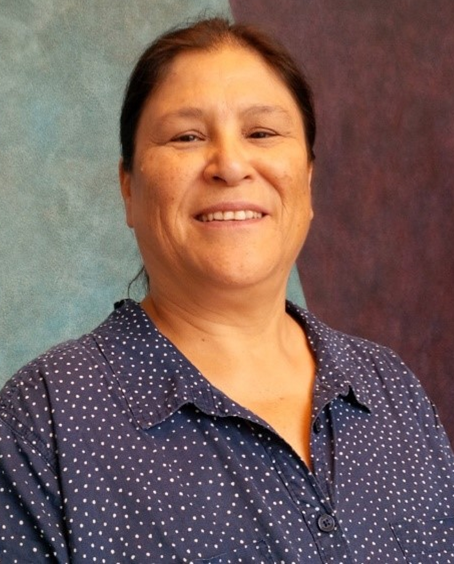Inclusion in Action Case Study: Museum Windsor
Making Indigenous Collections Accessible: A Collaboration with Nin Da Waab Jig
Museum Windsor
| Preamble | Our Story | Learnings | Moving Forward |
| Acknowledgements | Contributors | Resources | Dig Deeper |
Museum Windsor is a municipally funded museum under the management of the City of Windsor, and located on the traditional territory of the Anishnaabeg people of the Three Fires Confederacy (Ojibwe, Potawatomi, and Odawa). Due to Windsor’s unique location along the Detroit River, many different groups have called this area home including: Haudenosaunee, Attawandaron (Neutral), and Huron (Wyandot) peoples. Today, many Indigenous people and Métis across Turtle Island call this area home. We are grateful for the opportunity to work in this territory.
Initially opening as the Hiram Walker Historical Museum in 1958, the museum was established in the nationally designated François Baby House, a property that dates back to 1812 and played a pivotal role during the War of 1812. Today, Museum Windsor has grown to include the historic François Baby House, the Duff-Baby Interpretation Centre, and the newly opened Chimczuk Museum. Museum Windsor’s mission statement is as follows: “Museum Windsor inspires passion, arouses curiosity and promotes learning about the unique history and the natural, social, technological and cultural development of the City of Windsor and area for the benefit of our community and our visitors. The museum will acquire, preserve, document, illustrate and promote this history.” Museum Windsor’s collection currently includes over 15,000 artifacts, the oldest of which includes archaeological material dating back to 3,000 BC.
Based on community research and consultation, the main challenge we sought to address in this project was how to increase access to Indigenous materials for Indigenous communities in a respectful and collaborative manner. Generally speaking, based on past experiences and methods of collecting, museums and Indigenous communities have had a tenuous and rocky relationship. One way museums can mend this and move towards reconciliation is to establish a respectful, working partnership with the Indigenous community to improve access to their cultural materials.
The challenges and goals of this project were identified through consultation with local Indigenous community members. This consultation took the form of group and individual meetings, roundtable discussions, and a publically available survey on the topic of Indigenous approaches to material collection and museum collaboration. Once these challenges were identified, the following project was undertaken to address the discovered gap in collection management and accessibility of Indigenous material.
For this project, Museum Windsor partnered with Nin Da Waab Jig (Those who seek to Find) - Walpole Island Heritage Centre, located within the Bkejwanong - Walpole Island First Nation, to help catalogue and index a portion of their historical collection. This information was then added to a shared database created and maintained by Museum Windsor which is accessible to historical institutions, local Indigenous communities, and the general public. This database also includes Indigenous material from Museum Windsor’s collection and is open to content additions from other local historical and Indigenous groups. The hope is that this initiative will lead to increased research, cooperation, accessibility, and sharing of material between local Indigenous communities and historical organizations.
Located approximately 121 kilometers from Windsor, Ontario on unceded territory in the mouth of the St. Clair River, the Walpole Island First Nation has a registered population of approximately 4860 members with 2317 living on the reserve. The Walpole Island Heritage Centre was opened in 1989 as a land claims and historical research centre. Today the centre is a multi-functional facility which houses a Natural Heritage Program, Environmental Program, Research Department, External Projects Program and archival building for land claims, and research.
At the start of the project, Museum Windsor staff met with staff from the Walpole Island Heritage Centre to discuss the parameters of this project and conduct an initial survey of the Centre’s collection. From here, it was decided that the focus of the work would be directed at cataloging and indexing the Centre’s extensive book and oral interviews collection. Staff from Museum Windsor then made several trips to the Walpole Island Heritage Centre over the next few months and worked with volunteers to index, organize, and digitize the identified materials. By the conclusion of the project, staff and volunteers had indexed over 450 books and 85 cassette tapes. Catalogue information pertaining to these items was entered into an Excel document created by Museum Windsor staff. This document will serve as the foundation for a database of Indigenous material that will continue to grow as content from other local historical institutions and Indigenous communities is added. Currently, this database is available in hard copy and digital form at Museum Windsor, and is available to researchers, Indigenous community members, and historical institutions. In the future, we hope to make this database accessible online with the hopes of fostering greater access and information pertaining to Indigenous materials and culturally significant artifacts.
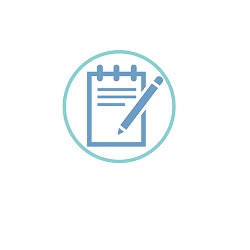 |
 |
|
Learning #1 The success of any collaborative project relies on community consultation. Museum staff created a public survey and hosted a roundtable discussion for Indigenous community members to provide feedback on our collections-based project proposal. The feedback from the Indigenous community was overwhelmingly positive and supportive towards creating a shared database of local Indigenous collections to increase accessibility for Indigenous communities. The roundtable discussion as a method of consultation was instrumental in providing open and insightful dialogue between the museum and the Indigenous community. Through this process we were able to understand and conceptualize the project through diverse lenses. We look forward to continuing this dialogue and creating a collaborative partnership with the Indigenous community. Learn more about your local Indigenous community here: Indigenous and Northern Affairs Canada First Nations Directory
|
Learning #2 It was suggested at the roundtable discussion that a good starting point would be to collaborate with Nin Da Waab Jig – Walpole Island Heritage Centre in organizing, cataloguing, and documenting their diverse collection. Museum staff worked with Heritage Centre staff to implement museum standard accession numbering and provide ideas for artifact storage and display. Museum staff also utilized an Indigenous classification system for the Heritage Centre library collection. The Brian Deer System was created for use in Indigenous contexts with the goal of reflecting Indigenous viewpoints and values in knowledge organization. Although the Walpole Heritage Centre has a relatively small collection, it was not feasible to complete the cataloguing process within the time constraints of this project. That being said, staff at the Heritage Centre were pleased with what our collaboration accomplished and are willing to pursue future partnerships with Museum Windsor.
|
 |
 |
|
Learning #3 Taking the initiative to create a shared database to make collections more inclusive and accessible demonstrates a leadership role; however, concerns may arise regarding content, intellectual property, and logistics. In our instance, the Walpole Island Heritage Centre was quite receptive to having their collections entered into a shared database, but this may not always be the case. It is important to keep in mind the duty to consult with organizations and local Indigenous communities prior to undertaking a project like this as opinions on this issue may vary. It would also be pertinent to set clear parameters about the intellectual property of the database e.g. who owns the database, who administers it, who can add material, etc. The current database for the Heritage Centre collection was created in Microsoft Excel and is administered by both Museum Windsor and Walpole Island Heritage Centre staff. |
Learning #4 When working with Indigenous collections, the issue of repatriating culturally sensitive or culturally significant objects may arise. Repatriation was not the focus in this case study, however, if your institution does not have a Repatriation Policy, here are a few guidelines:
Want to adopt a Repatriation Policy? See examples from other institutions below: |
Museum Windsor will be partnering with Turtle Island-Aboriginal Education Centre at the University of Windsor and the Walpole Island Heritage Centre to continue cataloguing and indexing their historical collection. Turtle Island is offering an Alternative Spring Break program to approximately 15 students who will continue the process of cataloging and digitizing the Heritage Centre collection. Museum Windsor plans to continue establishing collaborative and respectful relationships with other Indigenous communities and historical institutions with the hopes of adding information pertaining to their collections to the shared database.
Museum Windsor would like to acknowledge the following individuals and organizations for their assistance with the completion of this project:
- Nin Da Waab Jig - Walpoole Island Heritage Centre
- University of Windsor Turtle Island Aboriginal Education Centre
- Bkejwanong First Nation - Walpole Island First Nation
|
Advocate
|
CRAIG CAPACCHIONE Museum Coordinator, Museum Windsor Craig Capacchione has been with Museum Windsor since 2015 and is responsible for overseeing education and public programming. Craig holds a BA (Hons) in history and BEd from the University of Windsor and a MA in public history from the University of Western Ontario.
|
|
Catalyst
|
MELISSA PHILLIPS Museum Collections Assistant, Museum Windsor Melissa Phillips is currently the Museum Collections Assistant at Museum Windsor, a role she has been in since 2012. She is a member of Oneida Nation of the Thames, Turtle Clan. Melissa holds a Bachelor of Arts degree and a Master’s degree in History from the University of Windsor. She is also a graduate of the RBC Aboriginal Training Program in Museum Practices —an 8 month internship at the Canadian Museum of History in Gatineau, Quebec.
|
|
Advisory Committee Member
|
Advisory Committee Member
|
|
Associate Professor and Director, Museum Studies, Faculty of Information, University of Toronto |
Collection Coordinator, Canadian Museum of History |
Snapshot of Indigenous Collections Database Template
- We Are Coming Home: Repatriation and the Restoration of Blackfoot Cultural Confidence, edited by Gerry Conaty (Athabasca Press) (book)
- American Alliance of Museums Diversity and Inclusion Policies (Collections Development Policy)
- Canadian Museums Association Ethic Guidelines
- International Council Of Museums Code of Ethics for Museums
- Canadian Archaeological Association Statement of Principles for Ethical Conduct Pertaining to Aboriginal Peoples
- Turning the Page: Task Force Report on Museums and First Peoples
- Collections Policies from Various Museums which include repatriation policies and culturally sensitive objects policies: Royal BC Museum, Museum of Anthropology, British Columbia Museums Association, Pitt Rivers Museum, National Museums of Scotland, and National Museum of Australia, Royal Saskatchewan Museum
- Art Beyond Sight: Disability and Inclusion a Resource for Museum Studies Programs
- Canadian Conservation Institute (Government of Canada) Caring for Sacred and Culturally Sensitive Objects
- Protocols for Native American Archival materials

This resource was made possible by the generous support of the Ministry of Citizenship and Immigration Partnership Grant Program.
